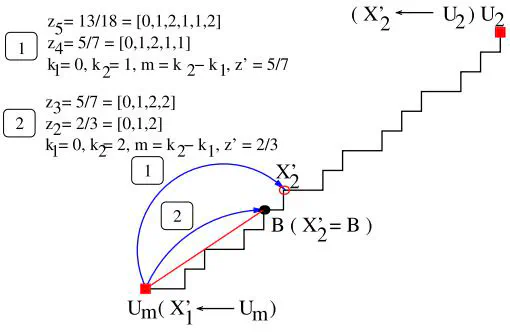Two efficient algorithms for computing the characteristics of a subsegment of a digital straight line
Jan 1, 2013· ,·
0 min read
,·
0 min read
Jacques-Olivier Lachaud
M. Said

Abstract
We address the problem of computing the exact characteristics of any subsegment of a Digital Straight Line (DSL) with known characteristics (a slope a/b, a shift to origin μ). We present here two new algorithms that solve this problem, whose correctnesses are fully proved. Their principle is to descend/climb the Stern-Brocot tree of fractions in a topdown/bottom-up way. The top-down algorithm SmartDSS has a time complexity which depends on the sum of the quotients of the continued fraction of the output slope and on the number of pattern repetitions. As a corollary, its time complexity is bounded by the sum of the quotients of the continued fraction of the input slope, Said and Lachaud (2009) [18]. The bottom-up algorithm ReversedSmartDSS has a time complexity proportional to the difference of depth of the input slope and the slope of the output segment, Said and Lachaud (2011) [17]. As a corollary, its complexity is thus logarithmic in the coefficients of the input slope. These algorithms are also efficient in practice, as shown by a series of experiments comparing these new algorithms with standard arithmetic digital straight segment recognition.
Type
Publication
Discrete Applied Mathematics, 161(15): 2293 - 2315, 2013
Discrete Geometry
Digital Straight Segment Recognition
Digital Straightness
2D
Christoffel Word
Pattern
Continued Fraction
Digital Geometry
Authors
Professor of Computer Science
My research interests include digital geometry, geometry processing, image analysis, variational models and discrete calculus.